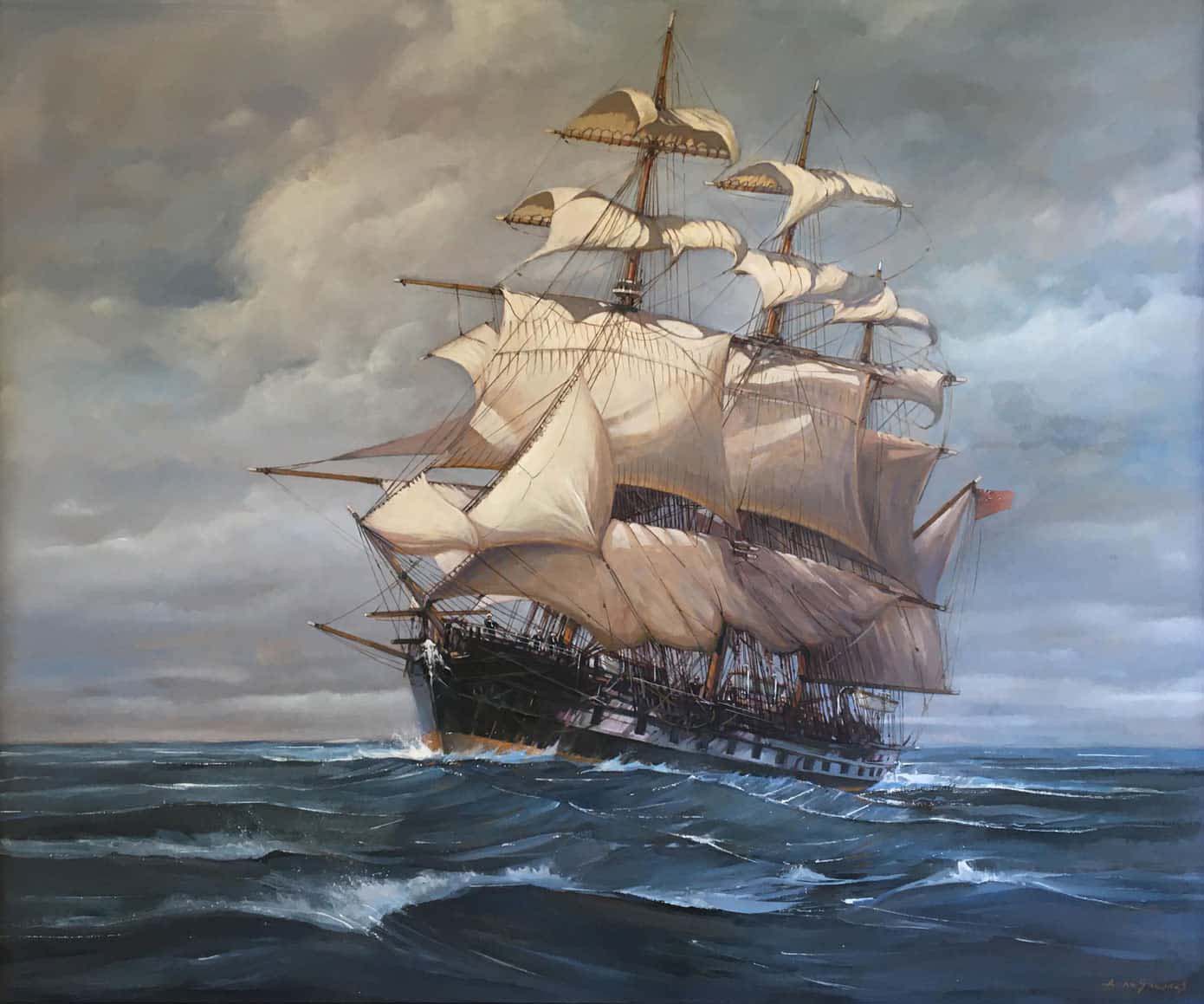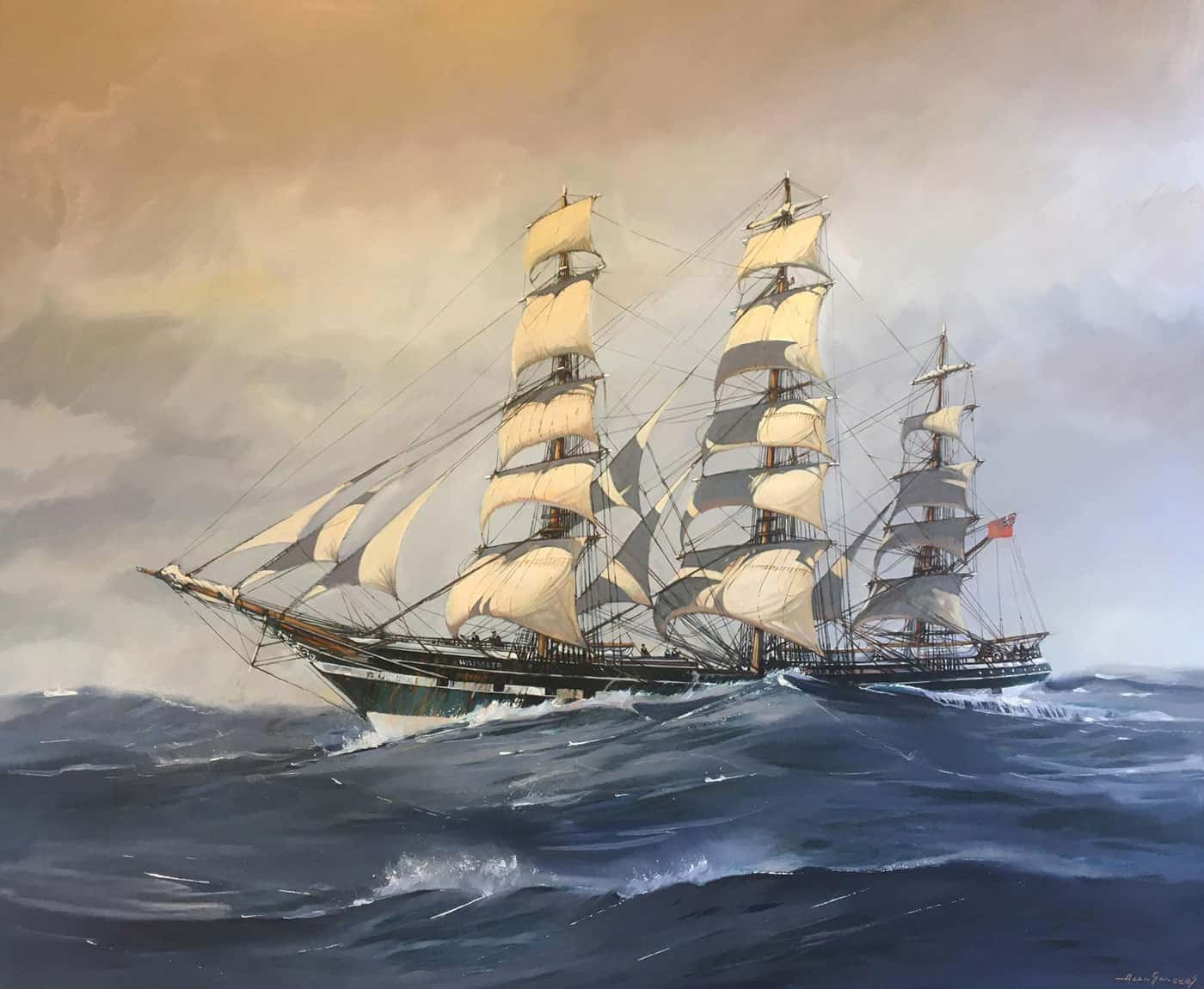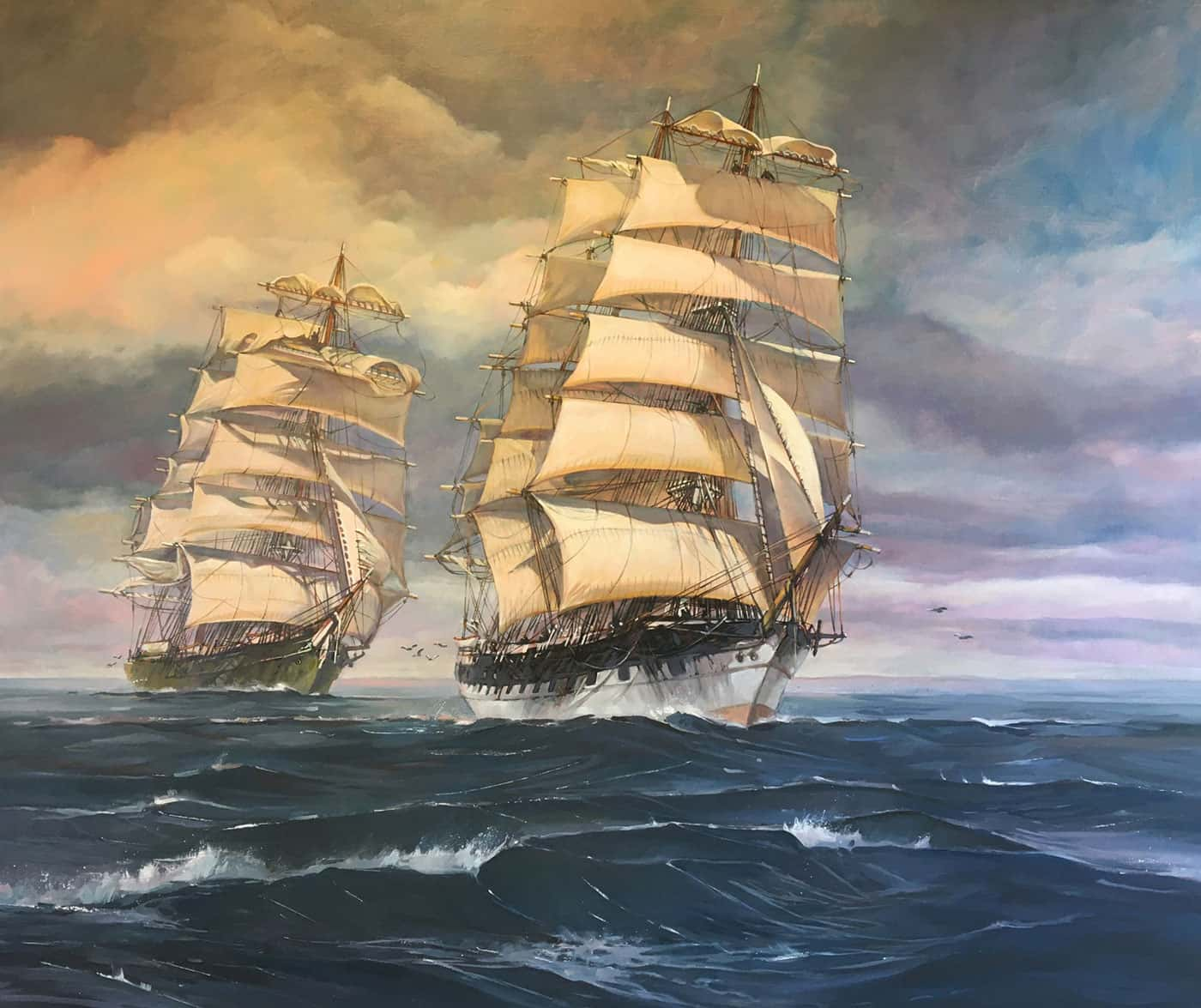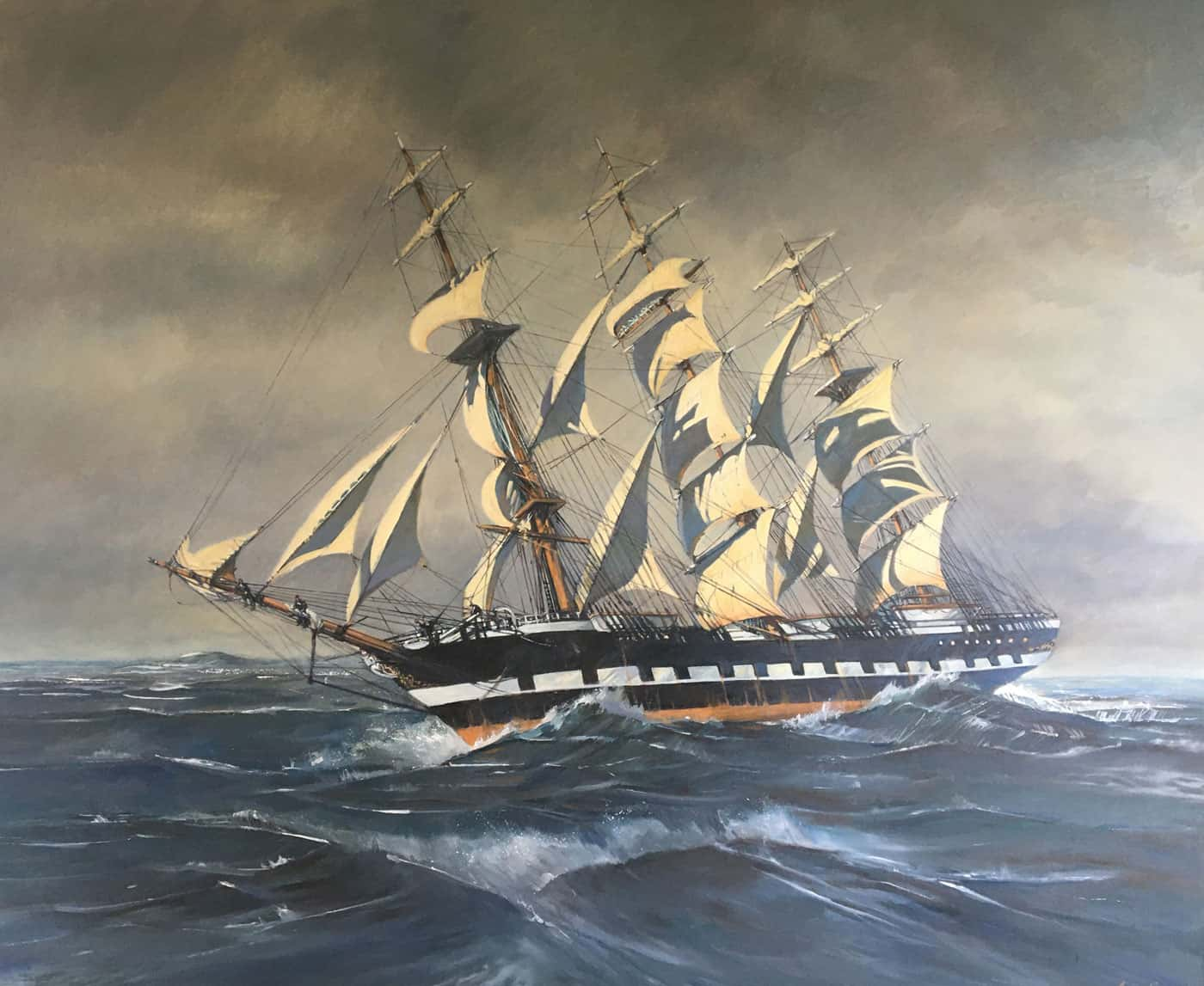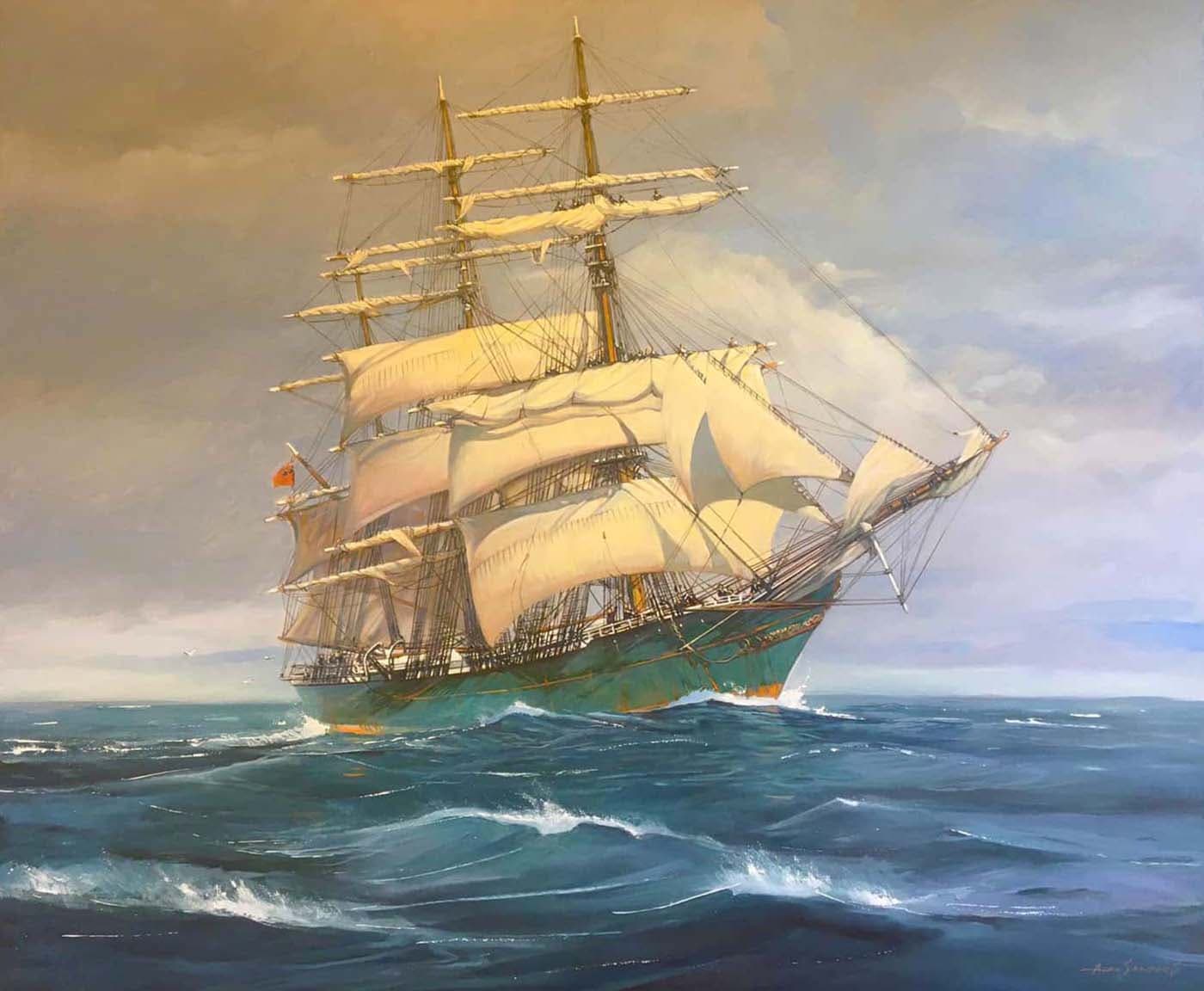Becoming a marine artist with some technical skills and knowledge, has been a little like sailing a large clipper ship, with lots of jibes and tacks to reach my destination. I set myself the challenge to visually capture these traditional sailing windjammers from another era, to appeal to today’s contemporary lifestyle. Stories of these large clipper ships are an essential part of New Zealand’s and Australia’s early history, with unlimited stories of courage, hardship and seamanship.
They are the stories of the officers and sailors that braved the elements, bringing to the Antipodes the pioneering men, women, and children to a new life in a new country. The ships that came to New Zealand and Australia had appropriate names like: Marlborough, Waimate, Waitangi, Invercargill, Waikato, and are an important part of the New Zealand story.
This series of Immigrant ship paintings, were inspired by a series of water colour illustrations by J. Spurling. Jack Spurling illustrated a number of books on Clipper Ships written by Basil Lubbock, ‘The Romance of the Clipper Ships’. These great illustrations really capture the many ships that plied the waters between the UK, New Zealand and Australia with wonderful stories that tell the history and final fates of these great ships. Nearly all of Spurling’s original illustrations were lost during the blitz of London in World War 2.
My idea was to use these small illustrations as a starting point, and to paint in oils, much larger versions of the original water colours. I have painted them in a much looser and atmospheric style, with my own interpretation of the sea and skies, to appeal to a more contemporary market.
These paintings of the ships are 1200mm x 1000mm, and this large format creates a visual impact. Painting majestic sailing ships of the past, with a full set of sails in a running sea with dark clouds gathering, is a challenge not for the faint hearted.
However, the thrill of bringing it all together on a canvas can be nearly as exciting as having been there.
